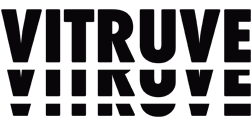14 de October de 2025
What Is a Good Training Load?
Every athlete and coach faces the same question sooner or later: “What is a good training load?”
The answer isn’t as simple as a number or a formula. A “good” training load is one that challenges the body enough to stimulate adaptation — but not so much that it leads to excessive fatigue, poor recovery, or injury.
Finding that balance is what separates consistent progress from burnout. Let’s dive into what training load really means, how to measure it, and what qualifies as “good” for different athletes.
What does training load mean?
Training load is the total amount of stress your body experiences from exercise. It combines volume (how much you train) and intensity (how hard you train) into a single concept.
In scientific and performance contexts, training load is often divided into two categories:
- External load: The measurable work performed (e.g., bar speed, distance, reps, or power output).
- Internal load: The physiological response to that work (e.g., heart rate, RPE, lactate, or fatigue).
To train effectively, both must be considered. An external increase in volume or intensity only translates to improvement if your body can tolerate and adapt to the internal stress.
One of the best ways to quantify this relationship is through training load metrics such as:
- TSS (Training Stress Score) – Stress of a single workout
- ATL (Acute Training Load) – Short-term fatigue
- CTL (Chronic Training Load) – Long-term fitness adaptation
TSB (Training Stress Balance) – Readiness to perform
If you’re not familiar with these, you can explore them in our guide on Chronic Training Load and how to interpret long-term fitness trends.

The Importance of Measuring CTL, ATL, TSB, and TSS
So… what is a good training load?
There isn’t one “good” load that fits everyone — it depends on your experience, sport, goals, and recovery capacity. However, there are principles that apply universally:
- A good training load is progressive.
It increases gradually over time, allowing the body to adapt. Too fast, and you risk overtraining; too slow, and you won’t stimulate enough growth. - A good training load is sustainable.
You should be able to maintain it consistently over weeks or months without chronic fatigue, excessive soreness, or decreased motivation. - A good training load reflects individual thresholds.
Your “good” load may be another athlete’s overload. Load tolerance depends on genetics, experience, recovery strategies, and age. - A good training load aligns with your goals.
For strength and power athletes, the goal might be maximizing force and bar speed. For endurance athletes, it’s accumulating higher total workloads while managing recovery.
In numbers, endurance athletes might maintain a Chronic Training Load (CTL) between 60–100, while elite professionals often exceed 120. In resistance training, progress is tracked more effectively using velocity-based metrics (VBT), which show how effort and fatigue evolve rep by rep.

How to determine your optimal training load
To find your ideal training load, combine data and feedback:
- Track training metrics.
Use tools like the Vitruve Encoder to measure bar velocity, power output, and fatigue levels in real time. This gives you immediate feedback on external load and movement efficiency. - Monitor long-term progression.
Keep an eye on your chronic and acute training loads using systems like Vitruve AMS to visualize trends and detect overtraining early. - Use VBT to individualize training.
Incorporating velocity-based training helps you auto-regulate daily sessions based on performance readiness. If bar velocity drops below your target zone, it’s a clear sign fatigue is accumulating and load should be reduced. - Listen to subjective cues.
Even the best data is incomplete without athlete feedback. Sleep, mood, soreness, and perceived exertion all influence how your body responds to training.
The danger of chasing high load numbers
Many athletes assume that higher load always equals better performance. In reality, excessive or poorly managed load often leads to:
- Chronic fatigue and plateau
- Injury risk from insufficient recovery
- Reduced neuromuscular performance, especially in speed- or power-based sports
The best athletes don’t train the hardest — they train the smartest. They know when to push, when to back off, and how to align external metrics with internal readiness.
Using Vitruve to manage your load effectively
The Vitruve Hub integrates all the tools needed to track and interpret training load effectively:
- The Workout Builder helps coaches design progressive overload programs aligned with athlete readiness.
- The Vitruve Encoder provides real-time VBT data to control external load during each session.
The Vitruve AMS centralizes training, recovery, and fatigue data — helping you understand both short- and long-term load responses.

By combining training load monitoring with velocity-based insights, you can make informed decisions that enhance performance, reduce injury risk, and build sustainable progress over time.
Because a good training load isn’t about doing more — it’s about doing what’s right for your body, consistently.
